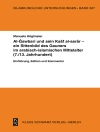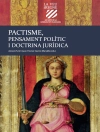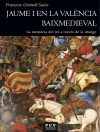In ‘The Cathedrals and Churches of the Rhine, ‘ M. F. Mansfield offers an evocative exploration of the architectural marvels dotting the banks of the legendary Rhine River. With a prose style that marries scholarly precision with lyrical grace, Mansfield delves into the rich tapestry of Gothic and Romanesque structures that have shaped Europe’s cultural and spiritual heritage. The narrative is enhanced by vivid descriptions and historical context, illuminating the churches’ roles not only as religious sites but also as reflections of regional identity and artistic achievement throughout the ages. M. F. Mansfield, an esteemed art historian with a focus on ecclesiastical architecture, draws from extensive research and personal travels along the Rhine to compose this insightful volume. His background in both theology and art history lends authority to his examination of these sacred spaces, allowing him to interpret their aesthetic and religious significance while addressing the socio-political milieu that influenced their construction. This book is an essential read for scholars, students, and lovers of architecture and history alike. Mansfield’s eloquent narrative and meticulous research will engage those seeking to understand the interplay between art, faith, and community along one of the most historically rich rivers in Europe.
Circa l’autore
M. F. Mansfield, whose contribution to the appreciation of ecclesiastical architecture is noteworthy, is best known for the influential book ‘The Cathedrals and Churches of the Rhine.’ This work, which meticulously details the architectural features, historical significance, and artistic beauty of the Rhine’s religious edifices, has been a vital resource for scholars and enthusiasts of Gothic and Romanesque architecture. Mansfield’s literary style combines erudition with accessibility, allowing readers to engage with the subject matter deeply while appreciating the aesthetic and cultural importance of these structures. While information is scant regarding Mansfield’s personal life or academic background, the enduring relevance of ‘The Cathedrals and Churches of the Rhine’ bears testament to the author’s profound understanding of the sacred architecture that crowns the European landscape. Mansfield’s contribution to architectural literature is singular in its focus on the Rhine region, providing insights into the societal and historical contexts that gave rise to some of the most magnificent cathedrals and churches in Europe. Regrettably, the dearth of biographical detail on Mansfield leaves us with the work itself as the primary means to appraise the author’s mastery and niche legacy in the world of art and architecture literature.












